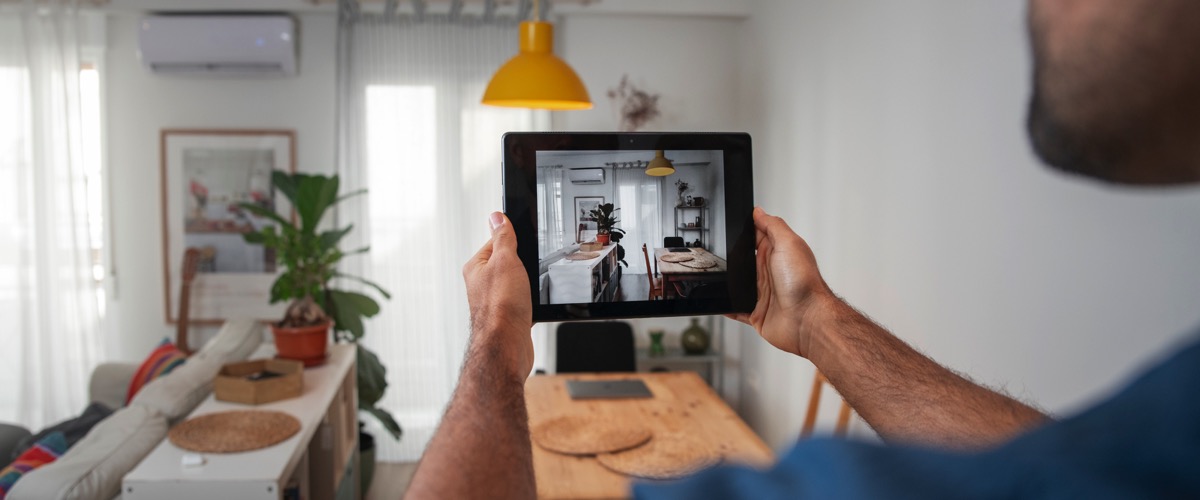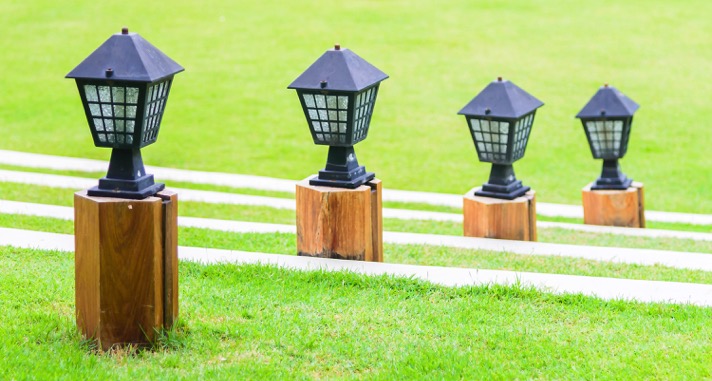
2024 Home Security Cameras: Top Picks and Features You Need
In today’s world, home security is more important than ever. With the rise of smart technology, homeowners have access to a wide range of security cameras that offer features such as high-definition video, two-way audio, motion detection, and cloud storage. But with so many options available, how do you choose the right camera for your needs? This guide will help you navigate the best home security cameras of 2024, including reviews of popular models like the Kasa smart security camera, Ring outdoor camera, Wyze camera, and more.
Top Home Security Cameras Comparison Chart
| Brand/Model | Resolution | Field of View (FOV) | Power Source | Smart Integration | Weather Resistance |
|---|---|---|---|---|---|
| Kasa Indoor Pan/Tilt Smart Security Camera | 1080p HD | 360° horizontal and 133° vertical view | Corded Electric | Google Assistant, Amazon Alexa | IP67 |
| Ring Stick Up Cam | Weather-Resistant Outdoor Camera | 1080p HD | 130° diagonal, 110° horizontal and 57° vertical view | Quick-Release Battery Pack | Amazon Alexa | IPX5 |
| WYZE Smart Home Security Camera with Motion Tracking | 1080p HD | 360° horizontal and 180° vertical view | Corded Electric | Google Assistant, Amazon Alexa | IP65 |
| Blink Mini Pan-Tilt Camera | 1080p HD | 110° diagonal, 350° pan range, 135° tilt range | Plug-In | Amazon Alexa | Indoor |
| Furbo 360° Dog Camera + Nanny Bundle | 1080p HD | 360° | Corded Electric | IP54 | |
| Armorcope 2K HD Dog Camera with Phone APP | 2K | 360° | Corded Electric | IP54 | |
| Tapo TP-Link 2K QHD Security Camera | 2K QHD | Corded Electric | Amazon Alexa | IP66 | |
| ARENTI 5G Security Camera Indoor | 4MP (2.5K) | 355° horizontal and 93° vertical view | Corded Electric | Amazon Alexa | IP65 |
| Petcube Cam 360 Camera | 1080p HD | 360° | Corded Electric | Indoor |
Kasa Indoor Pan/Tilt Smart Security Camera (Best Seller)

- Pan/Tilt Live Stream with 1080p HD Video: The Kasa Indoor Camera offers sharp and clear 1080p Full HD video, allowing you to easily rotate and adjust the camera’s view in real-time from your smartphone. It works seamlessly with both Alexa and Google Assistant, providing high-quality live streaming right in the palm of your hand.
- Real-Time Motion and Sound Detection: This camera is equipped with motion and sound detection features, sending instant alerts to your smartphone whenever activity is detected, even in low light up to 30 feet away.
- Flexible Storage Options and Smart Actions: Store footage locally on a MicroSD card or via Kasa’s cloud plan. Automate interactions with other Kasa devices using Smart Actions.
Ring Stick Up Cam | Weather-Resistant Outdoor Camera

- Versatile Placement and Easy Setup: The Ring Stick Up Cam Battery is a battery-powered, weather-resistant camera that can be easily placed on a flat surface or mounted indoors or outdoors. It features a simple setup by inserting the battery pack and connecting to Wi-Fi.
- Live View and Two-Way Talk: With Live View, you can check in on your home anytime via the Ring app, and the two-way talk feature allows you to see, hear, and speak to visitors directly from your phone, tablet, or Echo device.
- Enhanced Security with Ring Protect Plan: With a Ring Protect Plan (sold separately), you can record, review, and share videos and photos, with storage for up to 180 days, providing extended peace of mind and comprehensive home monitoring.
WYZE Smart Home Security Camera with Motion Tracking

- Indoor/Outdoor Versatility: The WYZE Cam Pan v3 is IP65-rated for weather resistance, making it suitable for both indoor and outdoor use. It operates in extreme temperatures from -4°F to 122°F and connects via 2.4 GHz Wi-Fi.
- Advanced Motion-Tracking and PTZ Control: The camera offers full 1080p HD resolution with 360° pan and 180° tilt capabilities, allowing you to monitor large areas. It also features motion-tracking that automatically follows and records moving objects, people, or pets.
- Color Night Vision and Privacy Mode: Equipped with color night vision, the camera captures clear footage even in low-light conditions. For added privacy, you can easily activate Privacy Mode through the Wyze app, which points the camera down and turns it off.
Blink Mini Pan-Tilt Camera

- 360° Coverage with Pan and Tilt: The Blink Mini Pan-Tilt Camera provides full 360° coverage, allowing you to see every corner of the room from your smartphone, tablet, or Alexa device. Easily control the camera’s pan and tilt functions through the Blink app for comprehensive monitoring.
- Real-Time Motion Alerts and Two-Way Audio: Stay connected to your home with real-time motion alerts sent directly to your smartphone. The camera also features two-way audio, enabling you to see, hear, and speak to people or pets through the Blink app.
- Flexible Storage Options and Easy Setup: Choose between cloud storage with a free 30-day trial of the Blink Subscription Plan or local storage with the Sync Module 2 and a USB drive (sold separately). The camera is easy to set up in minutes, simply plug it in, connect to Wi-Fi, and follow the Blink app instructions.
Furbo 360° Dog Camera + Nanny Bundle

- Comprehensive Pet Monitoring and Interaction: The Furbo 360° Dog Camera offers a rotating wide-angle lens with 4X HD zoom, allowing you to stay connected with your dog from anywhere. It features advanced functions like Selfie Alerts, Video History, and Doggie Diary to capture and save your pet’s precious moments.
- Enhanced Home Security with Smart Alerts: Beyond pet monitoring, the Furbo camera provides critical home security features, including Barking Alerts and Home Emergency Alerts for CO/Smoke detection, glass breaking, and person alerts, keeping you informed of important events at home.
- Interactive Treat Dispenser and Training Tool: The Furbo allows you to entertain and train your dog remotely by tossing treats via the app.
Armorcope 2K HD Dog Camera with Phone APP

- 2K HD Video with 360° Pan/Tilt Coverage: It offers 2K HD video quality with 8X optical zoom and a 355° horizontal and 100° vertical rotation range, providing comprehensive coverage of your home to monitor your pets or baby in crystal-clear detail.
- Smart Motion Detection and Auto Tracking: Equipped with smart motion detection, the camera can differentiate between pets and humans, sending real-time alerts to your phone. The auto-tracking feature ensures you won’t miss any important movements, keeping you connected no matter where you are.
- Night Vision and Two-Way Audio: The MagicPix night vision technology allows for clear viewing even in complete darkness, while the built-in microphone and speaker enable two-way communication, so you can interact with your pet or baby remotely at any time.
Tapo TP-Link 2K QHD Security Camera

- Award-Winning 2K QHD Resolution: The Tapo C120 delivers sharp 2K QHD video quality, earning the 2024 PCMag Editor’s Choice award for its outstanding image clarity and feature set at a great value.
- Weatherproof and Versatile Design: With an IP66 weatherproof rating, the compact Tapo C120 is built for both indoor and outdoor use, capable of withstanding rain, dust, and other elements. Its magnetic base allows for flexible mounting on various surfaces, making installation easy and adaptable.
- Advanced Night Vision and Detection Features: The camera features Starlight Color Night Vision for bright, clear video in low light conditions, with additional spotlights for extra illumination. It also includes free AI-powered detection for people, pets, and vehicles, helping to reduce unnecessary notifications.
ARENTI 5G Security Camera Indoor

- 4MP Ultra Clear Resolution with Dual-Band WiFi: The ARENTI 5G Security Camera offers 2.5K 4MP resolution for crisp, clear live streaming, allowing you to monitor pets, babies, or elderly family members. It supports both 2.4GHz and 5GHz WiFi bands for a stronger signal and faster connection.
- AI-Powered Motion Detection and Auto Tracking: Equipped with AI algorithms, the camera can differentiate between human motion and other objects, sending real-time notifications.
- Enhanced Night Vision and Two-Way Talk: The camera features advanced infrared night vision with a range of up to 32 feet, providing sharp images even in complete darkness. The built-in microphone and speaker enable two-way communication, allowing you to talk to your family or pets remotely.
Petcube Cam 360 Camera

- Comprehensive Pet and Home Monitoring: The Petcube Cam 360 offers 1080p HD video with 360° rotation, a 110° wide-angle view, and 8x digital zoom, allowing you to monitor your pets and home with clarity. The camera also features clear night vision up to 30 feet and two-way audio for real-time communication.
- Interactive Treat Dispenser and Alexa Compatibility: This camera comes with a dishwasher-safe treat dispenser, allowing you to toss treats remotely or schedule automatic dispensing through the Petcube app. It is also Alexa-compatible, enabling voice commands for added convenience.
- AI-Powered Alerts and Easy Setup: The camera uses AI technology to send real-time motion and sound alerts, distinguishing between pets and humans. It can be set up in just 60 seconds, connects to 2.4 GHz WiFi, and includes advanced encryption for data security.
How to Choose House Security Camera
Choosing the right house security cameras is essential to ensuring your home’s safety. Here’s a comprehensive guide to help you make an informed decision:
1. Determine Your Security Needs
Indoor vs. Outdoor: Decide whether you need cameras inside your home, outside, or both. Outdoor cameras should be weatherproof and able to withstand harsh conditions, while indoor cameras can focus on specific areas like entryways or living rooms.
General Monitoring vs. Specific Focus: Consider if you need general surveillance or cameras dedicated to specific purposes, such as monitoring entrances, backyards, or baby rooms.
2. Video Quality
Resolution: Look for cameras with at least 1080p resolution for clear, detailed footage. Higher resolutions like 2K or 4K offer even better clarity but may require more storage.
Field of View: A wider field of view allows the camera to cover more area. Choose a camera with at least a 120-degree field of view for broader coverage.
3. Night Vision
Infrared Night Vision: Most security cameras come with infrared LEDs that provide clear footage in complete darkness. Ensure the camera offers sufficient range for night vision.
Color Night Vision: Some advanced cameras offer color night vision, providing clearer and more detailed images in low-light conditions.
4. Connectivity and Compatibility
Wi-Fi vs. Wired: Wireless cameras are easier to install but require a strong Wi-Fi signal. Wired cameras offer more stable connections but can be more complex to set up.
Smart Home Integration: Ensure the camera is compatible with your existing smart home systems like Alexa, Google Assistant, or Apple HomeKit for seamless control and integration.
5. Motion Detection and Alerts
Customizable Zones: Cameras with customizable motion detection zones allow you to focus on specific areas, reducing false alerts from irrelevant movements.
Real-Time Alerts: Choose a camera that sends instant alerts to your smartphone when motion is detected, so you can quickly respond to any potential security threats.
6. Two-Way Audio
Communication: Two-way audio allows you to communicate with anyone on the other side of the camera. This feature is useful for interacting with visitors or deterring intruders.
Audio Quality: Check for clear audio quality to ensure effective communication.
7. Storage Options
Cloud Storage: Many cameras offer cloud storage for a fee, which provides easy access to footage from anywhere. Ensure you understand the costs and data retention policies.
Local Storage: Some cameras offer local storage options via microSD cards or external drives, providing an alternative to cloud subscriptions.
8. Power Source
Battery-Powered vs. Plug-In: Battery-powered cameras offer flexibility in placement but require regular recharging or battery replacement. Plug-in cameras provide continuous power but are limited by outlet availability.
Solar-Powered: Some outdoor cameras come with solar panels for a sustainable and low-maintenance power solution.
9. Installation and Setup
Ease of Installation: Wireless cameras are generally easier to install than wired ones. Some models come with magnetic mounts or adhesive strips for quick setup.
Professional Installation: For more complex systems, consider whether professional installation is necessary, especially for wired or multiple-camera setups.
10. Budget
Initial Cost vs. Long-Term Expenses: Consider both the upfront cost of the camera and any ongoing expenses, such as cloud storage fees or battery replacements.
Value for Money: Look for cameras that offer the best combination of features, quality, and reliability within your budget.
11. Privacy and Security
Encryption: Ensure the camera uses strong encryption protocols to protect your footage from unauthorized access.
Privacy Settings: Some cameras offer privacy modes that allow you to disable recording or block the camera’s view when you’re home.
Choosing the right home security camera depends on your specific needs, whether it’s for general home monitoring, outdoor surveillance, or pet-specific features. The cameras reviewed above offer a range of options in terms of price, features, and functionality, ensuring you can find the perfect solution to keep your home safe and secure. As smart home technology continues to evolve, investing in a reliable security camera is a crucial step in protecting your home and loved ones.



